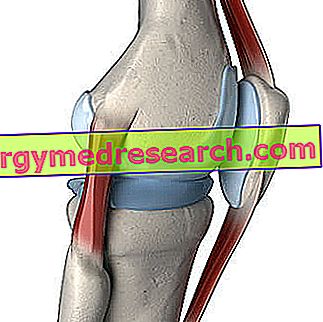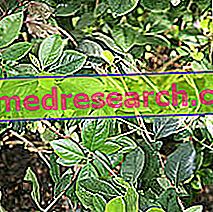Generality
Brie is a cheese-filled rind with light molds; of French origin, it is produced in the valley of the same name (department of Saine-et-Marne), located about 50km from the capital (to the east). It is a soft cheese matured briefly and made from cow's milk processing.

The Brie differs in various very specific types, but (since 1980) only 2 are awarded the AOC (Appellation d'Origine Contolée - equivalent to our DOP) mark: Brie de Meraux and Brie de Melun. The first (the best known) boasts a delicate flavor, while the second has a decidedly more definite aroma.
It is conceivable that the Brie was born at the abbey of Notre-Dame de Jouarre, approximately in the 11th century AD
As for the nutritional aspect, Brie is considered a semi-fat cheese (up to 27% in lipids). It represents a rather caloric food, as it is rich above all in triglycerides and proteins. From the gustatory point of view, this cheese "expresses itself to the maximum" in the summer months and early autumn.
Description and Production
The Brie has a circular shape (30-35cm in diameter), often a few centimeters (2.5-4cm), felted by a thin film of white molds and with an approximate mass of 0.5-2kg in each shape. Like the other cheeses with a classic flowering rind (especially those from raw milk), the Brie has a CENTRETETO maturing trend; this tendency to mature more rapidly in the center than outside gives it a particular STRATIGRAPHIC appearance, namely: a dark, creamy, yellowish undercurrent and a more consistent central core, pure white. The pasta is unctuous and has a typical taste.
Brie is a cheese made from raw cow's milk (now more often pasteurized). The seasoning lasts about 20-30 days (some mention 8 weeks) and takes place in damp places, once with straw supports to favor the development of external white felt.
Recipes and Nutritional Characteristics
Brie is a cheese that does not last long; should be stored in the refrigerator and only for a few days. From the gastronomic point of view, the culinary use is not recommended (in the recipes); in fact, consumption includes a tasting of its own with pairing of fruity red wines - light (Touraine) but also full-bodied (Burgundy or Bordeax).
Hygienic sanitary implications
The consumption of Brie is not recommended in case of pregnancy; this is due both to the surface molding and to its predisposition to house other types of microorganisms.
| Composition for: 100g of Brie - Reference values of the INRAN Food Composition Tables | ||||||||||||||||||||||||||||||||||||||||||||||||||||||||||||||||||||||||||||||||||||||||||||||||||||||||||||||||||||||||||||||||||
 | ||||||||||||||||||||||||||||||||||||||||||||||||||||||||||||||||||||||||||||||||||||||||||||||||||||||||||||||||||||||||||||||||||
Nutritional values (per 100 g of edible portion)
| ||||||||||||||||||||||||||||||||||||||||||||||||||||||||||||||||||||||||||||||||||||||||||||||||||||||||||||||||||||||||||||||||||
According to a study entitled " Evaluation of the hygienic and sanitary quality of some types of cheeses taken at retail stage ", published in the journal " Veterinaria Italiana, 46 (2), 221-231", it emerged that certain blue and molded cheeses are more prone to bacterial contamination. Among these, the Brie was predisposed to host Listeria monocytogenes, a bacterium responsible for a type of food poisoning potentially harmful to the fetus.
In summary, taking into account that the Brie does NOT lend itself to cooking, it is better to exclude it completely from the diet of the pregnant woman.
Nutritional Features
Brie contains on average about 48-49% of water, 22-23% of fats (up to 27%), 20% of protein substances and 4% of ashes (mineral salts).
Compared to what is mentioned in the table opposite, it can be seen that the Brie is a food as useful as it is controversial. Like most cheeses, this too brings significant amounts of high biological value proteins, calcium, phosphorus, vit. A and vitamin B2 (Riboflavin); however, the high caloric - lipid density precludes its frequent use and in considerable portions, especially in the case of overweight.
Cholesterol is NOT negligible and it is reasonable to believe that the distribution of fatty acids is in favor of saturated ones; this makes the Brie a product not suitable for the diet against hypercholesterolemia. The richness of calcium and phosphorus (essential for ossification) contextualizes it perfectly in the diet of the growing subject and of the elderly.
One last, but not least, note concerns the abundance of added sodium. Being a potentially unfavorable element for those affected (or at risk) of hypertension, its intake with food should be moderate as effectively; with it, of course, the portion of Brie cheese is further reduced.



